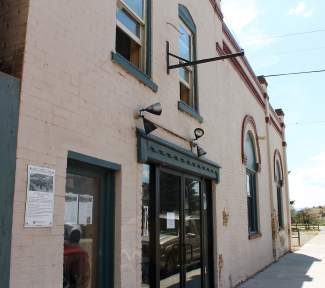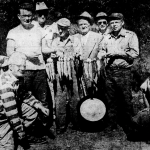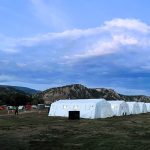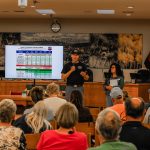20,000 worms take the stage in conservation district workshop on soil health
Eagle County landowners, from ranchers to gardeners, united to learn innovative techniques to preserve and promote soil health

Zoe Goldstein/Vail Daily
On Wednesday, Sept. 6, the Eagle County Conservation District held a workshop on soil health on the Gerard family ranch in Gypsum. The Gerards have been ranchers in Eagle County for four generations, and have implemented many of the conservation district’s practices to great success, which made their ranch the perfect location to learn about using new techniques to farm and ranch more effectively.
Every year, the conservation district holds a larger event for community members to learn more about the work it is doing. Last year’s event was a ranch tour of a property implementing the conservation district’s programs, including virtual fencing and the Colorado Saving Tomorrow’s Agricultural Resources program. This year’s workshop included a demonstration of the effect of rainfall on soil with various cover, an introduction to compost tea, a talk about worm farming, and a hands-on in-field soil health assessment.
“It’s really important that we remember: Soil is a living ecosystem,” said Shawn Bruckman, compost consultant and soil health specialist with The Ground Up and Eagle County Conservation District board member. Soil has physical, chemical, and biological properties, all of which need to be recognized and cared for, Bruckman explained. Healthy soil provides clean air and water, successful crop harvests, and prevents erosion, among other benefits.
The workshop introduced the five principles of soil health: Keeping the ground covered (soil armor), minimizing soil disturbance, allowing for plant and animal diversity, maintaining continual living plant roots, and integrating livestock.
During the rainfall simulator, it was shown how undisturbed soil with living roots and diverse plant cover, or soil armor, is significantly more protected against erosion than soil that is uncovered or has monolithic cover such as Kentucky bluegrass.

Support Local Journalism
“The cover is the most important of the principles, of the five listed, because, without that cover, you can break down even a good, stable aggregate,” said Marlon Winger, regional soil health specialist with the Natural Resources Conservation Service’s Soil Health Division. A soil aggregate is a group of soil particles that stick to each other.

20,000 worms makes for a lot of black gold
The event featured an introduction to worm composting by Jennifer Jones, a rancher at Colorado River Ranch who has used hundreds of pounds of worms to improve the health of her fields. Four years ago, following a soil evaluation on the ranch, Jones ordered 600 pounds of worms as an experiment. The worms multiplied, and today, Jones has approximately 20,000 pounds of worms.
Jones raises Wagyu beef, leaving her with pens full of manure. She and her team move the manure into piles in their worm farm.
“In about nine months, the manure goes from chunky, nasty manure to black gold,” Jones said. In the soil world, black gold is the colloquial term for rich, organic compost.
When she first started the project, Jones said, her fields were infested with three kinds of bad bugs. With the addition of worm compost, Jones said she saw the bugs evacuate 70 acres “overnight.” “As soon as we applied our liquid with the pivot, the biology changed immediately, and they evacuated,” she said. “Our fields are so, so much healthier,” she said.
Evan “Lanny” Ellis, permaculture design specialist and soil food web lab technician with The Ground Up, weighed in on Jones’ findings with a larger-scale perspective.
“I check out every other finished compost, and finished compost can be good stuff,” Ellis said. “You can get it from the compost facility, you can get it from anywhere in the world, you can get it from somebody’s backyard, it all can be compost, but really for it to be good and living, and for it to last a long time, and not go dormant, worm compost is the key. That stuff stays alive a long time.”
Make staying informed the easiest part of your day.
Sign up for daily or weekly newsletters at VailDaily.com/newsletter
Winger introduced attendees to an in-field soil health assessment they could do themselves, enabling participants to put new knowledge about soil to use. In small groups, attendees tested for conditions such as soil compaction and infiltration.
“We’re going to measure infiltration rate, which, in my opinion, tells the whole story of soil health, because infiltration is really measuring how stable your aggregates are, and if there are aggregates,” Winger said. “The more pore space is in our aggregates, the more diversity of organisms live there. If it’s a compressed, compacted soil, it’s going to be bacterial-dominated.”
For attendees, whose interest in soil health resulted from a variety of backgrounds, some conducted tests similar to the soil health assessment every day for their own jobs, while others had never heard of a slump test (testing the soil’s aggregate stability, or ability to absorb and hold water, by flipping a clump of soil onto a flat surface and seeing whether it holds its shape) or a slake test (testing larger aggregates by suspending a clump of soil in water for five minutes and seeing whether it held its shape or broke apart). Qualitative assessments such as these provide evidence to soil inspectors of the type of aid soil might need, attendees learned during the workshop.
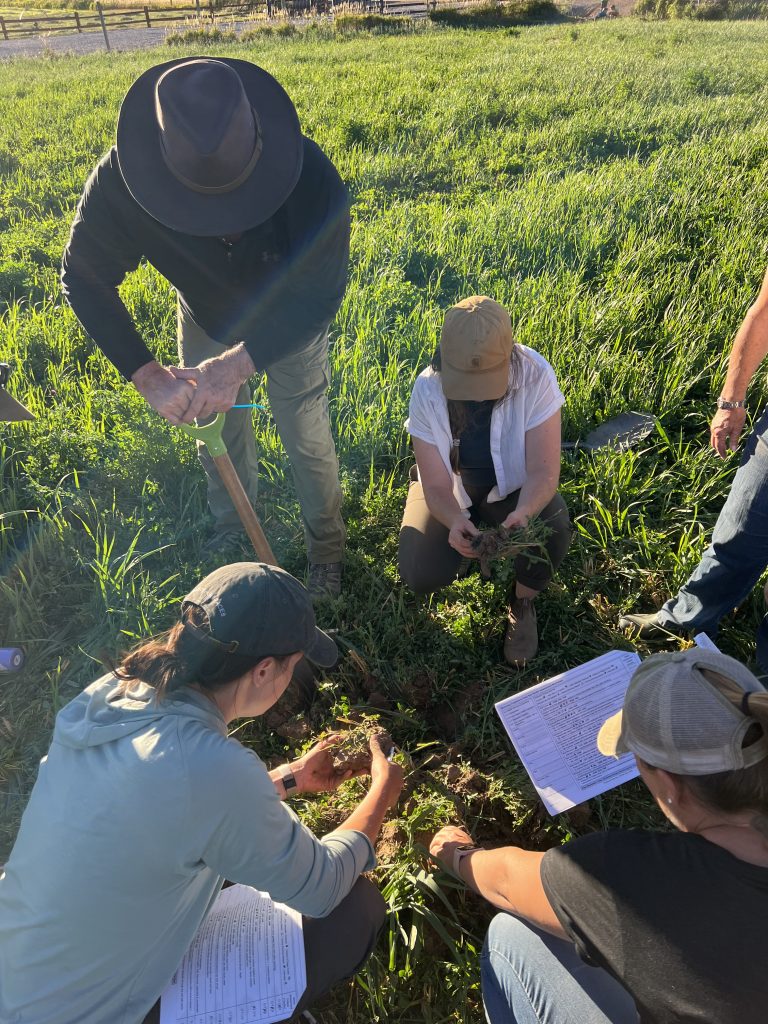
Conservation District dreams big to support local landowners
The Eagle County Conservation District is a special district elected to represent the landowners of Eagle County, connecting them to resources and education about improving their land to conserve natural resources. Among its resources, the district has programs for virtual fencing, renting out sustainable farming materials, seed distribution, turf replacement (replacing yard grass with native species), rebates to update irrigation systems, and a weed cost-sharing program (for tackling weeds with manual removal and reseeding).
“We can help pay you to do the right thing,” Bruckman said.
“Our constituency is a landowner, and a landowner could be a hundred acres, a landowner could be 1,000 square feet,” said Laura Bohannon, district manager for the Eagle County Conservation District.
“We want to work with the Gerards, who have been here 100 years. We want to work with the people who have owned land or property here for 20 years and just have a garden, we want to help the condo owner, the person who just moved here a year ago, the second homeowner, the AirBnB,” said Allegra Waterman-Snow, lead technician and communication specialist for the Eagle County Conservation District.
In its pursuit of a more sustainable source of funding than applying for grants to continue providing services to the people of Eagle County on a long-term basis, the conservation district is interested in introducing a potential tax of one-half of one mill. Eagle County Conservation District’s goal is to bring the question of this mill to voters on the November 2024 ballot.
“Essentially, what we’re trying to do with these mill levy dollars, is the $7.60 (on a hypothetical $750,000 home) that you would invest in us could come back in hundreds or thousands of dollars back on your property. All of these dollars are essentially being flushed back into our soils, to conserve our water, and they’re going on your property, your house,” Bohannon said.


